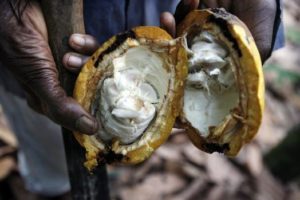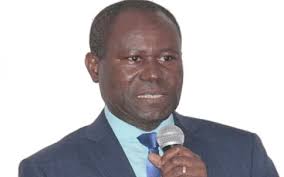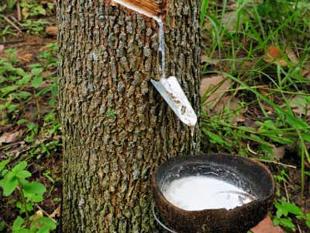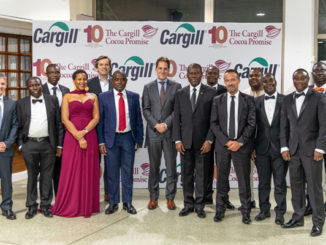 The world’s top cocoa producers have long been at the mercy of traders who set cocoa prices thousands of miles away in London and New York. Now the producers are trying to do something about it. West African neighbors Ivory Coast and Ghana, which grow about 60 percent of the world’s cocoa, have outlined wide-ranging plans to cooperate on production and marketing in hopes of gaining more influence over global prices. But some industry analysts remain skeptical.
The world’s top cocoa producers have long been at the mercy of traders who set cocoa prices thousands of miles away in London and New York. Now the producers are trying to do something about it. West African neighbors Ivory Coast and Ghana, which grow about 60 percent of the world’s cocoa, have outlined wide-ranging plans to cooperate on production and marketing in hopes of gaining more influence over global prices. But some industry analysts remain skeptical.
1. What’s the strategy?
To regulate global supply and grab more of the profit from the chocolate-making value chain, Ghana and Ivory Coast say they’ll coordinate production levels, bring their sales policies closer together and make sure that more of the crop is processed locally before it’s shipped out. They’ll also build warehouses to hold surplus beans and increase spending on marketing in an effort to boost consumption of the chocolate ingredient in their own region and in other emerging markets.
2. Why now?
While cocoa is this year’s best-performing commodity, growers are still reeling from last year’s crisis, when bigger-than-expected harvests sent prices tumbling. The plunge hurt the local economies, cut incomes for thousands of farmers and served as a stark reminder of how vulnerable producers are to swings in international markets. Ivory Coast, for example, was forced to delay a plan for expanding electrification to villages.
3. How much clout do African producers have?
While Ivory Coast’s influence on global cocoa supply is massive, it’s mostly limited to unprocessed beans, as the bulk of West Africa’s production is shipped elsewhere for grinding. Because most of chocolate’s value is added during processing and marketing, farmers in Ivory Coast and Ghana earned only about 5.5 percent of a global supply chain worth more than $100 billion in 2015. That’s less than the 15 percent governments in consuming countries receive in value-added tax on the sale of chocolate products. That’s what the two African governments are looking to change.
4. Will cooperation on cocoa sales be easy?
The two countries operate very different marketing systems for their cocoa, which means that attempts to harmonize them would probably require that one or the other change. For example, Ghana’s regulator purchases all the cocoa that farmers produce, while Ivory Coast auctions the right to export beans and regulates sales.
The one thing they have in common is that their cocoa industries are heavily regulated, with the respective governments setting a minimum price for farmers to receive from each cocoa harvest. The governments also compete against each other to sell their crops before the season starts, which makes sharing of crucial market information tricky.
Efforts so far haven’t resulted in much: Ivory Coast last year tried to convince Ghana to lower its official price in hopes of closing a price gap, and to reduce smuggling, between the two countries. But the countries ended up going their own ways.
5. What else are they planning?
On the production front, Ivory Coast has already suspended existing programs aimed at improving yields. Both countries are seeking to cooperate on scientific research to find new ways to protect cocoa trees and improve varieties. They also want to put in place a regional plan to fight diseases like swollen shoot that are affecting thousands of acres of trees.
6. Will their plans work?
There’s a lot to be skeptical about. Governments have struggled to predict and control output, especially as growers in Ivory Coast have illegally expanded plantings into protected forest areas. Smuggling between the two countries is also common because of porous borders.
Other proposals, like massive cocoa warehouses, are likely to be costly. What’s more, stockpiling would probably add to existing pressure on the market because traders know cocoa can’t be stored forever, especially in hot and humid West Africa.
And, of course, cocoa differs from oil in many ways, including that output can’t be curbed overnight as trees keep producing. Even Ivory Coast’s plan to stop encouraging higher yields could backfire, because a lot of the increased output last year may have been due to unlawful plantations in protected forests, rather than the yield programs. Ghana, meanwhile, hasn’t signaled any plans to limit its own output.
7. Should we brace for costlier candy bars?
The jury’s still out. Chocolate makers usually buy cocoa six months to a year ahead, so any price increases could take a long time to filter through to the price of a candy bar at the local store.
Companies are also cautious about raising prices so high that they cut into demand. And cocoa’s not the only ingredient to factor in — it accounts for about 20 percent of the average bar of milk chocolate, while sugar is almost 50 percent.
-BLOOMBERG



